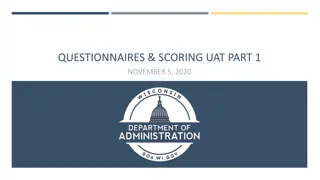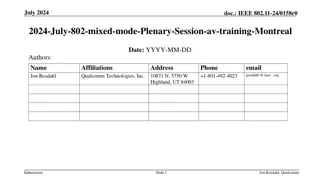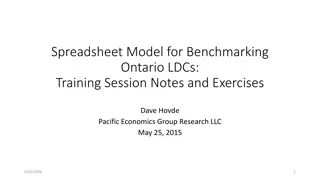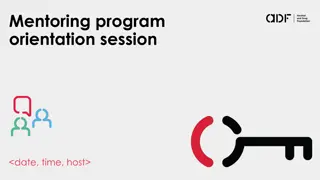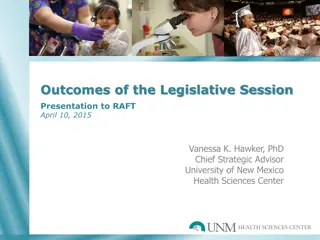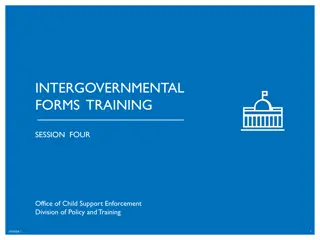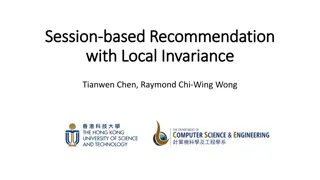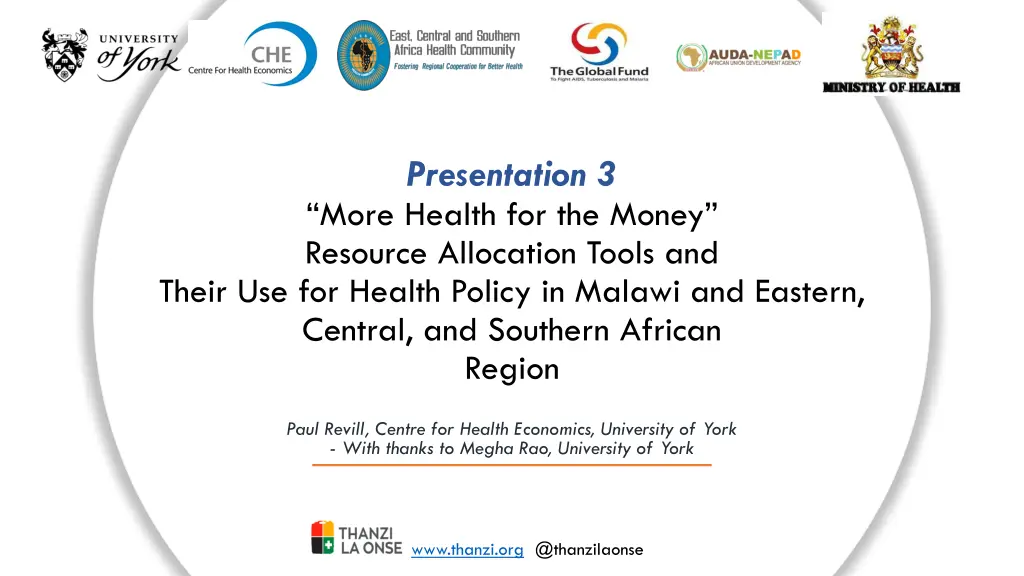
Health Economics Research for Resource Allocation in Health Policy
Learn how health economics research influences resource allocation in the health sector, particularly in Malawi and the Eastern, Central, and Southern African region. Explore tools and questions tackled in this field to optimize health interventions and investments.
Download Presentation

Please find below an Image/Link to download the presentation.
The content on the website is provided AS IS for your information and personal use only. It may not be sold, licensed, or shared on other websites without obtaining consent from the author. If you encounter any issues during the download, it is possible that the publisher has removed the file from their server.
You are allowed to download the files provided on this website for personal or commercial use, subject to the condition that they are used lawfully. All files are the property of their respective owners.
The content on the website is provided AS IS for your information and personal use only. It may not be sold, licensed, or shared on other websites without obtaining consent from the author.
E N D
Presentation Transcript
Presentation 3 More Health for the Money Resource Allocation Tools and Their Use for Health Policy in Malawi and Eastern, Central, and Southern African Region Paul Revill, Centre for Health Economics, University of York - With thanks to Megha Rao, University of York www.thanzi.org @thanzilaonse
How can health economics research guide resource allocation in the health sector? Figure: Child mortality vs per capita health expenditure, 2019 The centrality of value of money in health policy design Source: Our World in Data. UN Inter-agency Group for Child Mortality Estimation (via World Bank); World Health Organization
Illustration of resource allocation questions tackled 1. Which health interventions should the health system deliver? 2. How to prioritise investments into health system inputs? 3. How to allocate resources geographically? 4. How to incorporate concern for equity into resource allocation decisions? 5. How to evaluate a program with multiple stakeholders (inter-sectoral allocation)? 6. How to prioritize evidence generation (guiding research)?
Opportunity cost of health expenditure Figure: Marginal productivity versus per capital government expenditure on health for LMICs Health opportunity cost is the improvement in health that would have been possible if resources were used for alternative healthcare activities. Ochalek et al (2018) estimate the marginal productivity of health systems across the world in terms of dollars spent per Disability-adjusted life year (DALY) averted. This represents the opportunity cost of health expenditure. Source: Ochalek et al. (2018). Estimating health opportunity costs in low-income and middle-income countries: a novel approach and evidence from cross-country data. BMJ Global Health; 3(6). link
1a) Which health interventions should the health system deliver, given financial constraints? Figure: Representation of intervention choice based on the cost-effectiveness ratios of interventions 1 3,4 Budget = $264.5 million 2 5,6,7,8, 9,10 What does Malawi currently pay to avert a DALY? 19 ,2 0 22 21, 11- 18 23-29 30- 32 34, 35 39,40 $61 (i.e., 16 DALYs averted per $1,000) 42 3 3 3 8 41 Source: Ochalek et al. (2018). Supporting the development of a health benefits package in Malawi. BMJ Global Health; 3(2). link Source: Ochalek et al. (2018). Supporting the development of a health benefits package in Malawi. BMJ Global Health; 3(2). link
1b) How to account for health system constraints in intervention choice? Malawi HBP Analysis 2022 HR Donor Drug Drug Drug Constraints applied Demand Demand Demand Demand CET = $165 CET = $66 CET = $66 CET = $66 CET = $66 None CET = $66 Results/Scenarios S1 S2 S3 S4 S5 S6 S7 Number of interventions in the package (out of 141) 136 87 62 61 59 39 66 DALYs averted 96,494,837 86,480,825 69,835,788 55,170,188 55,148,810 51,677,861 53,412,409 1069% 858% 308% 185% 100% 65% 99% Drug budget (% of 2019/20 budget) (% of total) Resource 544% 448% 362% 259% 253% 100% 172% Medical staff use 328% 217% 158% 129% 123% 42% 104% Nursing staff 831% 722% 362% 281% 251% 73% 289% Pharmaceutical staff Source: : Mohan et al. (2023).
2. How to prioritise investments into health system inputs? Figure: Marginal value of investing in health system inputs in terms of net DALYs averted per $1000 spent Uganda (2020) Malawi (2022) Source: Mohan et al. (2023). Supporting the revision of the health benefits package in Uganda: A constrained optimisation approach . Health Economics (in production).
3. How to allocate resources geographically? Using a mathematical formula representing expected cost of service delivery (based on population needs) to allocate the national health budget in Malawi Figure: Formula-based allocation versus current allocation to districts in Malawi (2020) District Source: McGuire et al. (2020). Allocating resources to support universal health coverage: development of a geographical funding formula in Malawi. BMJ Global health;5(9). link
4. How to incorporate concern for equity into resource allocation decisions? Figure: Example equity-efficiency trade-off question to elicit local preferences for equity in Uganda Figure: Representation of the trade-off between efficiency and equity For Uganda, Griffin et al (2019) found health gain to the poorest 20% of people should be given approximately 6 times the weight of health gains to the richest 20%. [Atkinson inequality aversion parameter (median category) = 14.70] Source: Griffin et al. (2019). Incorporating Concern for Health Equity Into Resource Allocation Decisions: Development of a Tool and Population-Based Valuation for Uganda. Value in Health Regional Issues;31, pg134-141. link
5. How to evaluate a program with multiple stakeholders? The Social Cash Transfer Programme (SCTP) in Malawi is a cross-sectoral policy with impacts on health, education, nutrition, agriculture and welfare. Implementation of the SCTP requires collaboration across sectors and across national and international stakeholders, with different set of objectives and values. Figure: Evaluation of the Social Cash Transfer Programme (SCTP) in Malawi Steps Summary Identify the decision-makers Define the population groups impacted by the decision Estimate the policy costs and consequences (Impact matrix) Summarise the overall impact and value Stakeholders Effects and opportunity costs Source: Ramponi et al. (2021). Informing decisions with disparate stakeholders: cross-sector evaluation of cash transfers in Malawi. Health Policy and Planning; 37(1). link
6. How to prioritize evidence generation? Figure: Value of research to address uncertainty in net health benefit of interventions in Malawi Uncertainty around expected net health benefits Potential population net health gains from research addressing uncertainty Source: Schmitt et al. (2021). Concomitant health benefits package design and research prioritisation: development of a new approach and an application to Malawi. BMJ Global Health Practice; 6(12). link
Other developments in resource allocation The Thanzi La Onse (TLO) model1 is a model representation of Malawi s healthcare system, epidemiology and demography and possesses tremendous potential to test and project the impact of various resource allocation options available to MOH Malawi. 1 The Thanzi La Onse Modelling team. TLO model 0.1.0. https://www.tlomodel.org/authors.html (2021).
Summary 1. Value for money (VfM) considerations are crucial in the context of limited resources for the health sector. The concept of VfM needs to be applied across all health policy decisions eg. intervention choice, health system strengthening, research prioritization. 2. In making resource allocation decisions, it is important to account for not only financial constraints but other constraints on other resources such as health system inputs. Economic methods can also be used to estimate the value of relaxing these constraints. 3. The objectives of the health sector extend beyond health maximisation (eg. equity, financial risk protection) and determinants of health extend beyond the remit of the health sector. VfM analyses are equally important in these areas.
Thank You! www.thanzi.org @thanzilaonse


